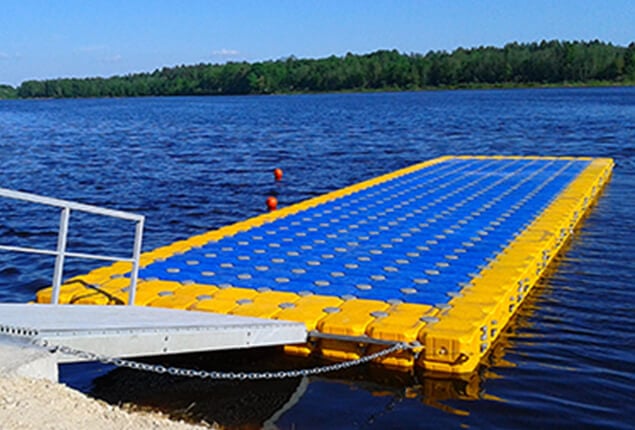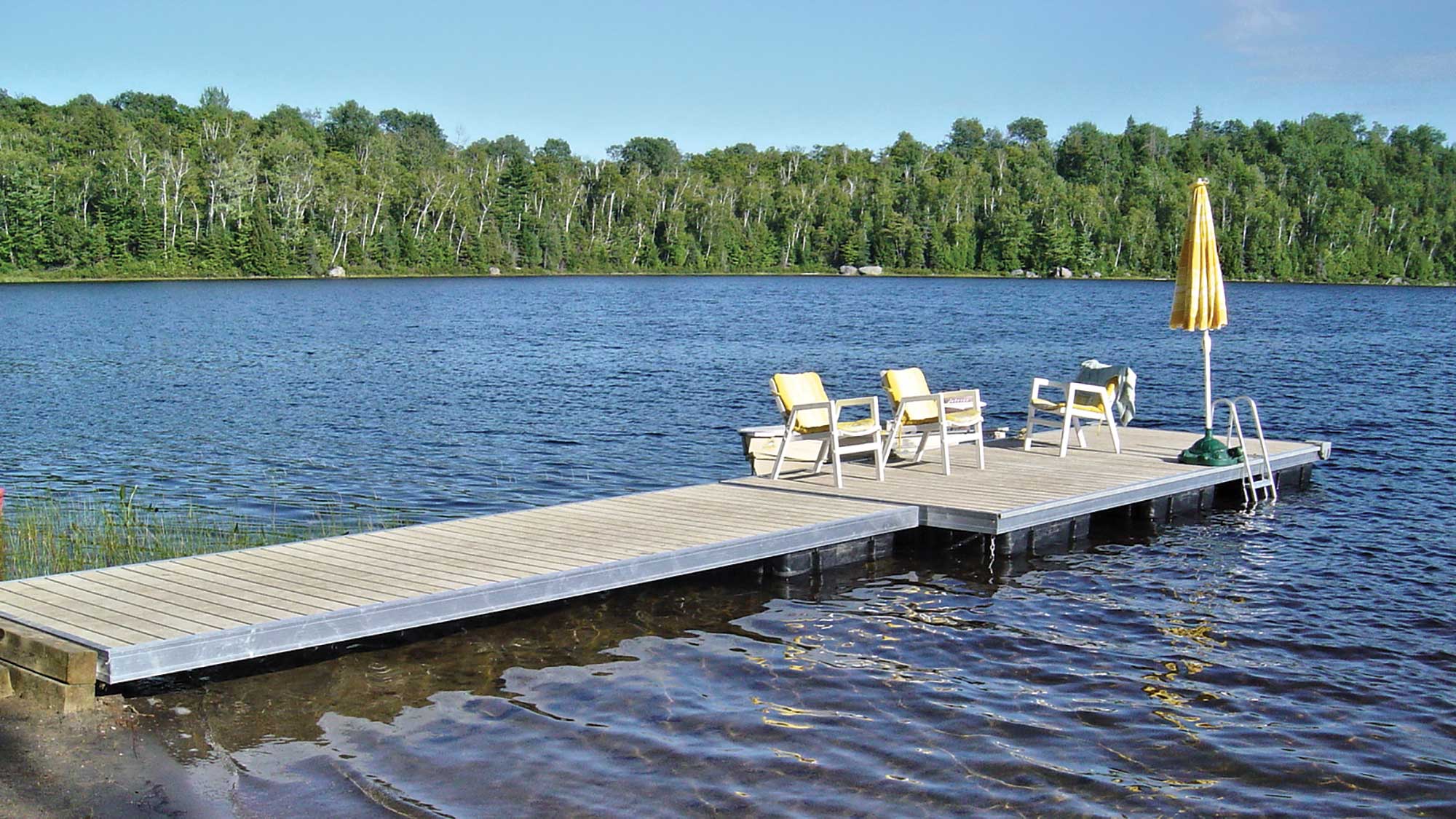Crafting Custom Solutions: Why a Floating Dock Builder is Necessary for Distinct Needs
Crafting Custom Solutions: Why a Floating Dock Builder is Necessary for Distinct Needs
Blog Article
Produce the Perfect Docking Service With Floating Docks
Floating docks present a functional option for a range of maritime demands, adjusting seamlessly to rising and fall water levels and diverse vessel types. As we explore the vital elements that contribute to the effectiveness of floating docks, a number of crucial elements concerning security and upkeep will arise, increasing inquiries concerning how to maximize your docking experience.

Advantages of Floating Docks
Floating docks offer numerous advantages that make them an excellent choice for various maritime applications. Among the key advantages is their flexibility to transforming water levels. Unlike repaired docks, floating docks fluctuate with the trend, making sure consistent access for vessels. This feature is particularly essential in areas prone to significant tidal changes or seasonal water degree modifications.
Additionally, floating docks are usually much easier and quicker to set up contrasted to conventional fixed frameworks. Their modular layout permits simple assembly and disassembly, facilitating upkeep and moving when needed. This flexibility is particularly valuable for short-term applications or in atmospheres where conditions might alter.
Floating docks also tend to be more eco-friendly, as they minimize disruption to the seabed and bordering water communities. Their resilient nature minimizes the risk of damages to aquatic life, promoting a healthier environment. These docks can be customized to fit various vessel dimensions, ensuring that they satisfy details operational needs.
Ultimately, the mix of versatility, simplicity of installment, and ecological considerations makes floating docks a highly efficient remedy for a large range of maritime needs.
Picking the Right Materials
Selecting the proper products for floating docks is essential to ensure security, durability, and longevity. The selection of materials directly affects the dock's performance in different environmental problems, consisting of direct exposure to water, sunshine, and possible wear from marine traffic.
Common materials made use of for floating docks consist of light weight aluminum, wood, and high-density polyethylene (HDPE) Light weight aluminum is lightweight, corrosion-resistant, and calls for marginal maintenance, making it a superb selection for long life. Nevertheless, its first price can be higher compared to other products.
Timber, while visually attractive and giving a typical appearance, can be prone to rot and pest damages if not correctly treated. Making use of pressure-treated wood or naturally durable varieties like cedar or redwood can alleviate these concerns.
HDPE is a popular selection because of its resistance to UV rays and chemicals, along with being eco-friendly. floating dock services. It is lightweight and readily available in numerous colors, enabling personalization
Eventually, the ideal product choice will depend upon certain needs, including budget, wanted aesthetics, and ecological factors to consider. Cautious assessment of these variables will result in a successful and resistant floating dock solution.
Design Factors To Consider for Stability
When creating floating docks, guaranteeing security is an essential facet that can substantially impact their capability and safety and security. Security in floating dock style is influenced by various factors, consisting of buoyancy, weight distribution, and the setup of original site elements.
Weight distribution is important; uniformly distributing lots throughout the dock prevents tilting and enhances security. This can be accomplished with tactical placement of docking tools, such as fenders and cleats, along with correct spacing of floats. In addition, YOURURL.com the dimensions of the dock ought to be thoughtfully planned. Bigger layouts can supply boosted stability, especially in harsh water problems, while longer docks might call for additional assistances to stop drooping.
An additional vital factor to consider is the ecological impact, consisting of wave activity and wind. Integrating features such as sidewalls or skirting can aid reduce the effects of environmental forces, preserving stability in negative conditions. Eventually, a mix of thoughtful style, product choice, and understanding of ecological aspects will certainly yield a floating dock that meets both security and security demands.
Setup Tips and Strategies

Following, protect the needed licenses and stick to neighborhood policies, which may dictate installment approaches and ecological factors to consider. If required, involve a certified service provider experienced in floating dock installations. Use top quality products developed for aquatic atmospheres to improve sturdiness and durability.
When positioning the dock, align it identical to the coastline to help with simple gain access to. Guarantee that the anchoring system is durable, utilizing concrete blocks or helical anchors to stabilize the dock against wind and wave action. It's vital to account for seasonal water degree variations, consisting of possible ice movement in chillier environments.
During the installation, verify the dock's floatation and stability prior to completing the anchoring. Consistently inspect the installment for any kind of signs of wear or damage. By the original source adhering to these suggestions and techniques, you can accomplish a protected, practical, and cosmetically pleasing floating dock setup that meets your requirements.
Upkeep and Care Guidelines
Keeping and caring for floating docks is vital to lengthening their lifespan and guaranteeing secure usage. Normal examinations must be conducted to identify any indications of wear, damages, or marine growth. Try to find splits, loosened fittings, or blemished locations on the dock's surface area, as these concerns can compromise structural honesty.
Cleansing is important. Utilize a pressure washing machine to remove algae, barnacles, and debris, which can accumulate over time. For stubborn growth, think about ecologically pleasant cleansing agents that will not damage marine life.
Furthermore, examine the mooring lines and anchors frequently to ensure they are safe and secure and cost-free from rust. Replace any torn or harmed lines without delay to keep security.
During severe weather, such as tornados or freezing problems, take precautionary procedures. Safeguard the dock with added mooring lines and, if practical, eliminate any type of detachable elements to stop damage.
Verdict
In verdict, the application of floating docks provides a functional and reliable docking solution appropriate for numerous maritime applications. With appropriate setup and routine upkeep, floating docks can provide reliable and dependable docking experiences for a vast variety of vessels.
As we discover the vital components that contribute to the performance of floating docks, several key elements relating to stability and upkeep will certainly arise, raising concerns about how to enhance your docking experience. Unlike taken care of docks, floating docks rise and autumn with the tide, making certain consistent availability for vessels.When making floating docks, guaranteeing stability is an essential facet that can significantly impact their capability and security. Stability in floating dock style is affected by numerous variables, consisting of buoyancy, weight circulation, and the arrangement of parts. Ultimately, a combination of thoughtful layout, product selection, and understanding of ecological factors will yield a floating dock that satisfies both stability and security demands.
Report this page